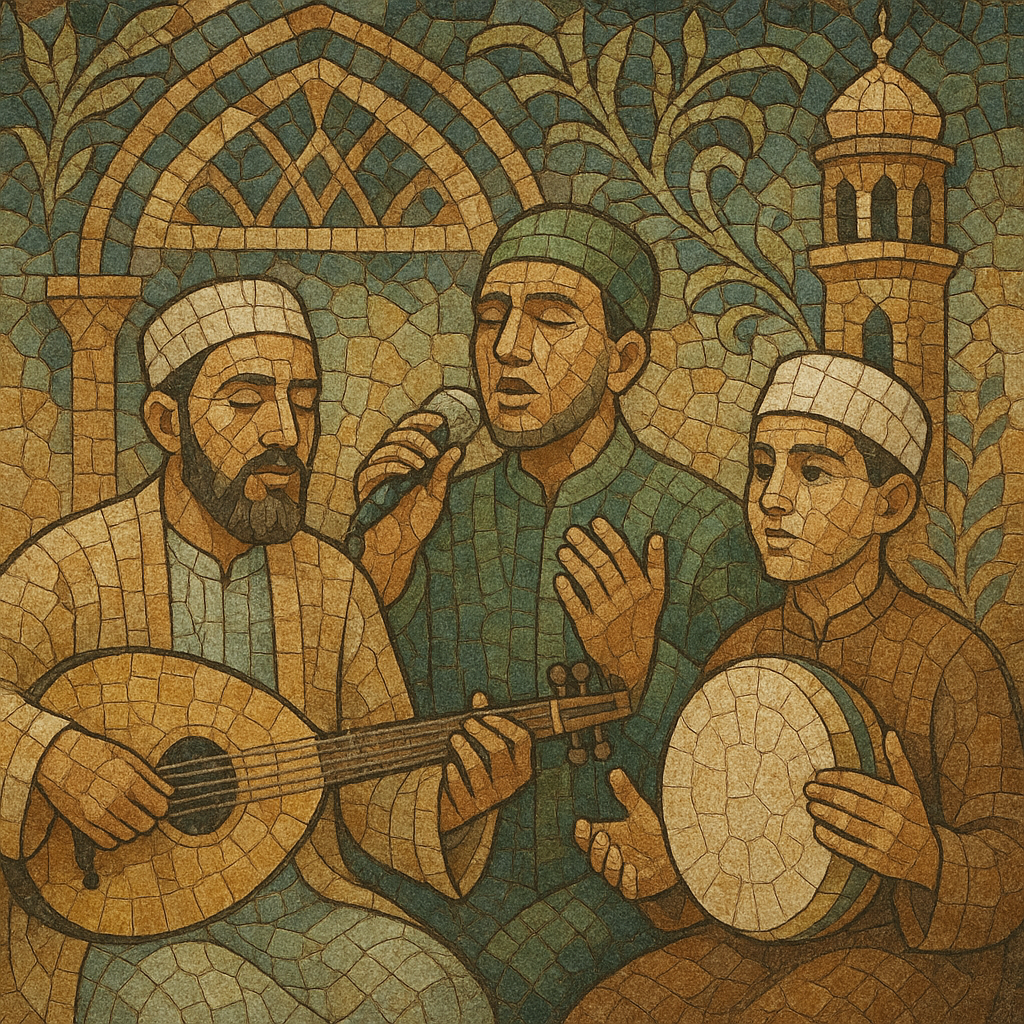Sholawat is an Indonesian Islamic devotional song tradition centered on lyrical praises and blessings upon the Prophet Muhammad (salawat). It bridges Arabic liturgical poetry with local musical aesthetics, most commonly voiced in Arabic and Indonesian.
Traditionally performed in pesantren (Islamic boarding schools), mosques, and community gatherings such as maulid and haul commemorations, sholawat relies on call-and-response vocals and frame-drum ensembles (rebana/terbangan, hadrah, marawis). In contemporary practice, it also appears in pop-influenced formats with keyboards, oud (gambus), violin, bass, and light percussion, making it accessible to younger audiences while retaining its devotional core.
Melodically, sholawat often draws on maqam (modal) flavors such as Hijaz, Bayati, and Nahawand, with ornamental, melismatic singing. Its rhythmic palette spans simple 2/4 and 4/4 grooves to Middle Eastern-derived patterns (e.g., malfuf and wahda), adapted to Indonesian ensemble practices.
Sholawat emerges from the broader practice of sending blessings upon the Prophet (salawat), which accompanied the spread of Islam into the Indonesian archipelago between the 13th and 16th centuries. As Islam took root in Java, Sumatra, and across the islands, Arabic devotional poetry and chant were localized, forming sung practices that resonated with existing communal singing and drumming traditions.
By the 17th century, frame-drum ensembles—rebana/terbangan, hadrah, and marawis—had become closely associated with sholawat sessions in mosques, pesantren, and village gatherings. The oud (gambus) and later violin entered via Yemeni and broader Arab diasporic influence, dovetailing with Indonesia’s orkes gambus tradition and giving sholawat performances a distinct timbral palette.
In the 20th century, sholawat ensembles formalized repertoires for maulid and haul events while radio, cassettes, and VCDs helped spread recordings nationwide. Hymnals and printed texts standardized popular poems and refrains (e.g., Allahumma salli ‘ala Muhammad), while pesantren networks nurtured intergenerational transmission.
From the 1990s onward, Indonesian “pop religi” and orkes gambus aesthetics converged with sholawat, yielding accessible arrangements with keyboards, guitar, and drum kit, alongside rebana. In the late 2010s, a prominent youth-driven revival—amplified by social media—brought sholawat to festival stages and viral videos, keeping its devotional intent while expanding its audience and stylistic palette.
Sholawat now spans intimate dhikr circles to arena-scale concerts, from purely acoustic hadrah ensembles to pop, R&B, and EDM-tinged versions. Despite stylistic breadth, its lyrical core—praise, remembrance, and moral exhortation—remains central.


